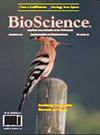A multicenter and epidemiological study of patterns and treatment strategies for mandibular condyle fractures
IF 0.5
4区 农林科学
引用次数: 0
Abstract
To evaluate retrospectively the epidemiological characteristics of the prevalence, type and treatment modalities of the condylar mandibular fractures. Data of all patients who underwent surgical or nonsurgical management for condyle mandibular fracture were collected. The study was conducted to assess the trauma etiology, age group, gender, treatment method, anatomic distribution of injury and complications by reviewing patients’ records. There were 139 patients with 171 mandibular condylar fractures. Among these patients, 85% were men, with an overall male-to-female ratio of 5.6:1. The highest occurrence of trauma was in the 21-30 years age group. The most frequently observed etiology was motorcycle traffic accidents and the subcondylar region was the most common location with 109 fractures. There was statistically significant difference between treatments (p < 0,001). In the nonsurgical treatment group, the prevalence of complications was observed compared to the surgical group (p < 0.001). The predominant complications were: mouth opening limitation, mandibular deviation, malocclusion, temporomandibular disorder, paresthesia and facial paralysis. Considering the limitations of this study, subcondylar fractures were the most frequent, especially in men aged 21-30 years, and the surgical treatment showed the fewest complications.关于下颌骨髁突骨折的模式和治疗策略的多中心流行病学研究
回顾性评估下颌骨髁突骨折的发病率、类型和治疗方式的流行病学特征。收集所有接受手术或非手术治疗的下颌骨髁状突骨折患者的数据。研究通过查阅患者的病历,评估了创伤病因、年龄组、性别、治疗方法、损伤的解剖分布和并发症。共有139名患者,171处下颌骨髁突骨折。其中,85%的患者为男性,男女比例为 5.6:1。外伤发生率最高的年龄段为 21-30 岁。最常见的病因是摩托车交通事故,髁下区域是最常见的骨折部位,共有 109 例。不同治疗方法之间存在统计学差异(P < 0.001)。与手术组相比,非手术治疗组的并发症发生率更高(p < 0.001)。主要并发症有:张口受限、下颌偏斜、咬合不正、颞下颌关节紊乱、麻痹和面瘫。考虑到本研究的局限性,髁突下骨折最为常见,尤其是在 21-30 岁的男性中,而手术治疗的并发症最少。
本文章由计算机程序翻译,如有差异,请以英文原文为准。
求助全文
约1分钟内获得全文
求助全文
来源期刊

Bioscience Journal
AGRICULTURE, MULTIDISCIPLINARY-AGRONOMY
CiteScore
1.10
自引率
0.00%
发文量
90
期刊介绍:
The Bioscience Journal is an interdisciplinary electronic journal that publishes scientific articles in the areas of Agricultural Sciences, Biological Sciences and Health Sciences. Its mission is to disseminate new knowledge while contributing to the development of science in the country and in the world. The journal is published in a continuous flow, in English. The opinions and concepts expressed in the published articles are the sole responsibility of their authors.
 求助内容:
求助内容: 应助结果提醒方式:
应助结果提醒方式:


